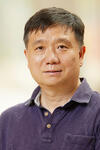In The News: Department of Physics and Astronomy
For the first time ever, astronomers have detected a burst of radio waves from within our own galaxy — and traced the powerful signal to a young neutron star known as a magnetar, according to a report.

Three new studies trace the burst to a bizarre "magnetic star"—and help solve a major astronomical puzzle.
For more than a decade, astronomers have been puzzled by energetic and unexplained bursts of radio light, observed in other galaxies, that flash for a fraction of a second and then mysteriously disappear. The sources of these fast radio bursts (FRBs), as they’re known, is one of the most tantalizing open questions in astronomy.
For the first time, we have tracked a strange blast of radio waves – called a fast radio burst – back to its source, solving a major cosmic mystery. The burst came from a magnetar, which is a neutron star with a strong magnetic field.

For the first time, astrophysicists have pieced together observational evidence of a fast radio burst that likely traveled to Earth from a particular type of neutron star in our Milky Way galaxy, according to three studies published Wednesday in the journal Nature.
The energy landscape in Nevada has evolved so quickly that a renewable energy measure on tomorrow's ballot might now be largely symbolic.
Superconductors are best known for their ability to conduct electricity without resistance, but these exotic materials could only be produced artificially and function under specific conditions like certain temperature or pressure. Their demand is high with the reliance of futuristic quantum computing technology upon them.

A team of physicists in New York has discovered a material that conducts electricity with perfect efficiency at room temperature—a long-sought scientific milestone. The hydrogen, carbon, and sulfur compound operates as a superconductor at up to 59 degrees Fahrenheit, the team reported in Nature. That’s more than 50 degrees higher than the previous high-temperature superconductivity record, set last year.

A UNLV professor is getting accolades for a research milestone that could have major implications for energy efficiency.
The long-sought goal of finding a superconductor that works at room temperature has been achieved, showing promise for future applications in personal electronics and other technologies, researchers say.

It’s the kind of discovery scientists wait a lifetime for. The kind that, with a little - or a lot - more work, could completely change the world as we know it.

EVER SINCE DUTCH PHYSICIST HEIKE ONNES DISCOVERED SUPERCONDUCTIVITY IN 1911, scientists have strived for its perfect formulation.

